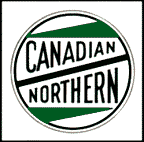| It is currently Fri Apr 19, 2024 2:23 pm |
|
All times are UTC - 5 hours [ DST ] |
Hydro testing issues
Moderators: Rick Rowlands, tomgears, Randy Hees
 
|
Page 3 of 4 |
[ 59 posts ] | Go to page Previous 1, 2, 3, 4 Next |
|
| Frisco1522 |
|
||
|
Joined: Sun Aug 22, 2004 3:37 pm Posts: 1275 Location: Pacific, MO |
|
||
| Robby Peartree |
|
||
|
Joined: Wed Aug 25, 2004 11:16 am Posts: 767 |
|
||
| Robby Peartree |
|
||
|
Joined: Wed Aug 25, 2004 11:16 am Posts: 767 |
|
||
| SD70dude |
|
|||
Joined: Tue Feb 20, 2018 7:08 pm Posts: 317 Location: Alberta, Canada |
|
|||
| Kelly Anderson |
|
||
|
Joined: Tue Sep 14, 2004 7:52 am Posts: 2572 Location: Strasburg, PA |
|
||
| Dave |
|
||
|
Joined: Sun Aug 22, 2004 7:19 am Posts: 6404 Location: southeastern USA |
|
||
| Overmod |
|
||
|
Joined: Thu May 24, 2012 1:37 pm Posts: 2230 |
|
||
| Overmod |
|
||
|
Joined: Thu May 24, 2012 1:37 pm Posts: 2230 |
|
||
| Robby Peartree |
|
||
|
Joined: Wed Aug 25, 2004 11:16 am Posts: 767 |
|
||
| CCDW |
|
||
|
Joined: Wed Jan 28, 2009 4:30 pm Posts: 207 |
|
||
| Kelly Anderson |
|
||
|
Joined: Tue Sep 14, 2004 7:52 am Posts: 2572 Location: Strasburg, PA |
|
||
| Mark Jordan |
|
||
|
Joined: Fri Nov 07, 2008 11:21 am Posts: 473 |
|
||
| Stationary Engineer |
|
||
|
Joined: Thu Dec 12, 2013 1:26 pm Posts: 236 |
|
||
| CCDW |
|
||
|
Joined: Wed Jan 28, 2009 4:30 pm Posts: 207 |
|
||
 
|
Page 3 of 4 |
[ 59 posts ] | Go to page Previous 1, 2, 3, 4 Next |
|
All times are UTC - 5 hours [ DST ] |
Who is online |
Users browsing this forum: Google [Bot], Overmod and 176 guests |
| You cannot post new topics in this forum You cannot reply to topics in this forum You cannot edit your posts in this forum You cannot delete your posts in this forum You cannot post attachments in this forum |

